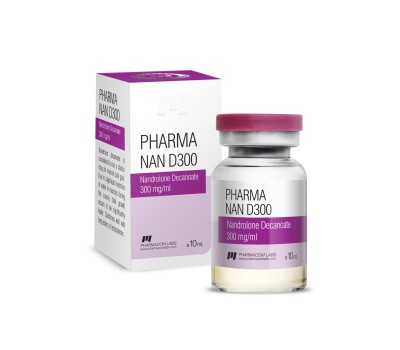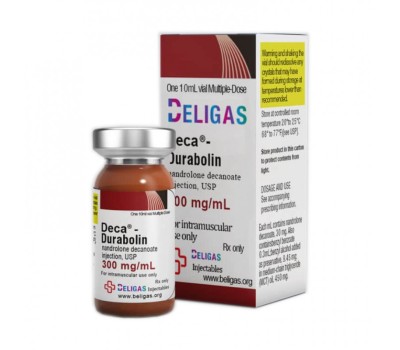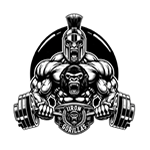
Nandrolone, known widely in its commercial form as Deca Durabolin, is viewed within the performance enhancement community as a potent anabolic-androgenic steroid (AAS) derived from Testosterone. It’s celebrated for its ability to significantly aid in recovery from injuries, increase muscle size, strength, and power, and enhance the ability to train harder and longer. Its use is prevalent among athletes and bodybuilders seeking therapeutic relief, recovery enhancement, and increased muscular endurance, often making it a top choice for those goals. Nandrolone’s ability to boost red blood cell production, enhance collagen synthesis, and increase bone mineral content has also made it useful in treating various medical conditions, such as anemia associated with chronic kidney failure, osteoporosis, and certain forms of breast cancer.
Despite its benefits, Nandrolone is not without its side effects, which may include mood changes, cardiovascular toxicity, and potential impacts on fertility and sexual function. However, it is generally considered to have a more favorable side effect profile compared to other steroids, particularly when doses are kept low. Nandrolone has a unique profile in that it does not convert to estrogen as readily as Testosterone, reducing the risk of estrogenic side effects like gynecomastia and water retention. Nonetheless, it can still cause androgenic side effects such as hair loss and acne in predisposed individuals. The performance enhancement community values Nandrolone for its balanced approach to muscle building and recovery, with careful consideration given to dosing to minimize adverse effects.

Nandrolone History
Nandrolone is one of the most widely used anabolic steroids; it comes in two forms, the decanoate ester form known as Nandrolone Decanoate (often sold under the brand name Deca Durabolin) and its phenylpropionate ester form known as NPP (Nandrolone Phenylpropionate). Developed in the late 1950s, Nandrolone first came to the market in 1962 when it was introduced for medical use by the pharmaceutical company Organon. Its discovery was part of a wave of anabolic steroid development during the 1950s and 1960s, aiming to find therapeutic agents with improved anabolic activity and reduced androgenic effects compared to Testosterone.
Nandrolone Decanoate quickly gained popularity in the medical community for its ability to treat a wide array of conditions, from osteoporosis and certain forms of anemia to chronic wasting conditions associated with diseases like cancer and HIV/AIDS. Its relatively low androgenic activity compared to its anabolic effect made it a favorable option for patients, including women and children, who needed the anabolic effects without the virilizing side effects.
In the realm of sports and performance enhancement, both Nandrolone Decanoate and NPP became favorites among athletes and bodybuilders due to their significant muscle mass and strength gains, coupled with a lower incidence of side effects. Nandrolone is known for its ability to improve nitrogen retention and collagen synthesis, making it beneficial for both bulking and cutting cycles, as well as for therapeutic purposes to aid in the recovery of joint and tendon injuries. However, its use has been mired in controversy due to widespread abuse in sports, leading to it being banned by most major sporting organizations. Despite this, both forms of Nandrolone remain among the most studied and utilized anabolic steroids in the world of performance enhancement.

Use Nandrolone
Nandrolone, available in two forms—Deca-Durabolin (Deca) and Nandrolone Phenylpropionate (NPP)—is renowned for its use in building mass, enhancing recovery, and improving joint health. Here’s a guide to using Nandrolone effectively:
Deca-Durabolin Usage
Cycle Length: For optimal results, a minimum cycle length of 12 weeks is recommended, with some users extending to 16-20 weeks due to Deca’s slow-acting nature.
Dosage: Beginners can start with 400mg per week, while intermediate users might opt for 400-600mg weekly. Advanced cycles may include additional compounds like Dianabol and Testosterone for significant lean mass and strength gains, with Deca dosages around 500mg per week.
Stacking: Deca is commonly stacked with Dianabol and Testosterone for bulking, enhancing the anabolic nature, and minimizing Dianabol’s adverse effects on sexual health. High doses of Testosterone can also be stacked with Deca, particularly for its androgenic benefits, which might alleviate Deca-related impotence.
PCT and Recovery: Post-cycle therapy is crucial due to Deca’s suppressive effects on natural testosterone production. A combination of Clomid and HCGegerate is often recommended to restore hormonal balance and maintain gains.
“If you want a mild cycle with low sides then use nandrolone by itself.
The only rule of thumb for nandrolones is stacking it with proviron. that is what i recommend 100%.
We had a debate on this subject on our podcast you can check that out.”
-Stevesmi
Nandrolone Phenylpropionate (NPP) Usage
NPP is the faster-acting version of Nandrolone, requiring more frequent injections but allowing for shorter cycles. The general approach to NPP usage would be similar to Deca but adjusted for the shorter ester:
Cycle Length: Generally shorter than Deca, often 8-12 weeks.
Dosage: Due to its faster action, NPP might be used at slightly lower dosages but injected more frequently, typically every other day or 3 times per week.
Stacking and PCT: Similar principles apply as with Deca, including the importance of stacking with a testosterone base and the necessity of a comprehensive PCT protocol.
Both forms of Nandrolone are celebrated for their ability to promote muscle growth, enhance recovery, and support joint health. However, careful consideration of dosage, cycle length, and PCT is essential to maximize benefits while minimizing potential side effects, including the well-documented risk of “Deca Dick” or erectile dysfunction associated with Nandrolone usage. Always consider individual goals, tolerance levels, and health status when planning a cycle with Nandrolone or any anabolic steroid.
“First post on these boards but I’ve been creeping for some time. I love Nand (specifically NPP). It makes me feel good, horny, hungry and confident. I see crazy gains and can split a cycle between bulk and cut and have it work out. Tren is amazing don’t get me wrong, but its a motherfucker. I feel like god for the first three weeks, the I start thinking all women are scheming whores but still want to fuck everyone of them, then by about week six I’m a sweaty self loathing hog who has major stomach issues and no personality with the exception of anger.
Current Running
700mg Test P 560mg NPP 400 Mast P
and I’m feeling like Thor.
Anyways I’m sure this is a beaten up topic but screw it, I eventually had to post.”
-BigS2020


